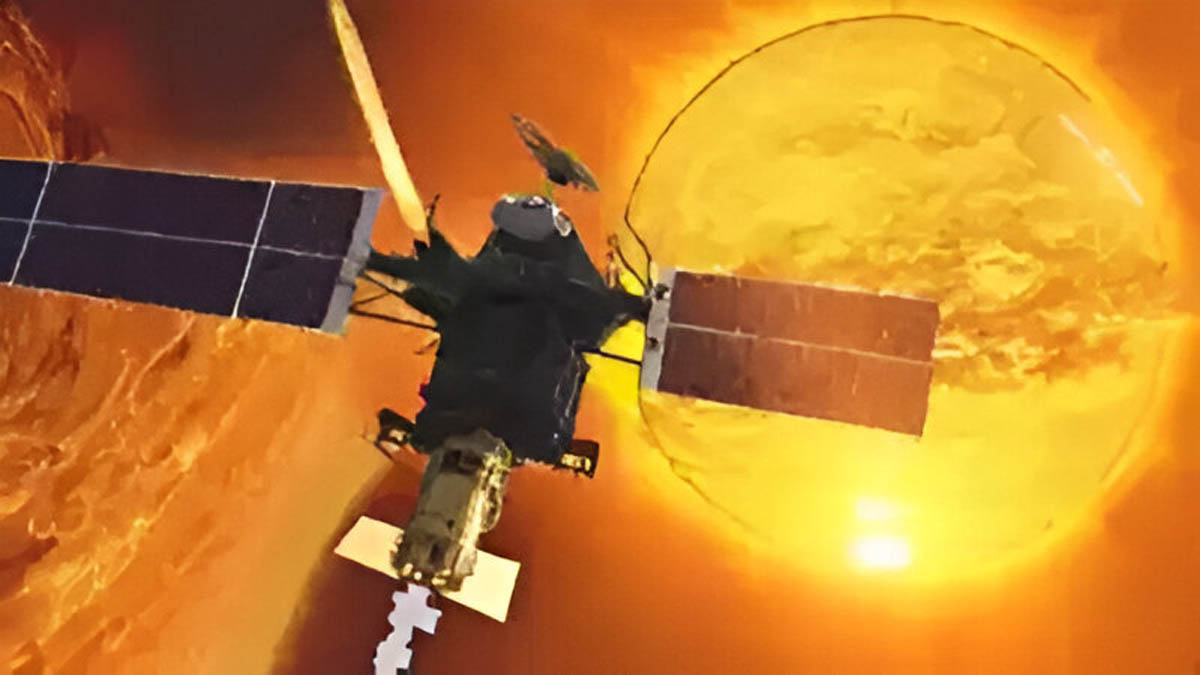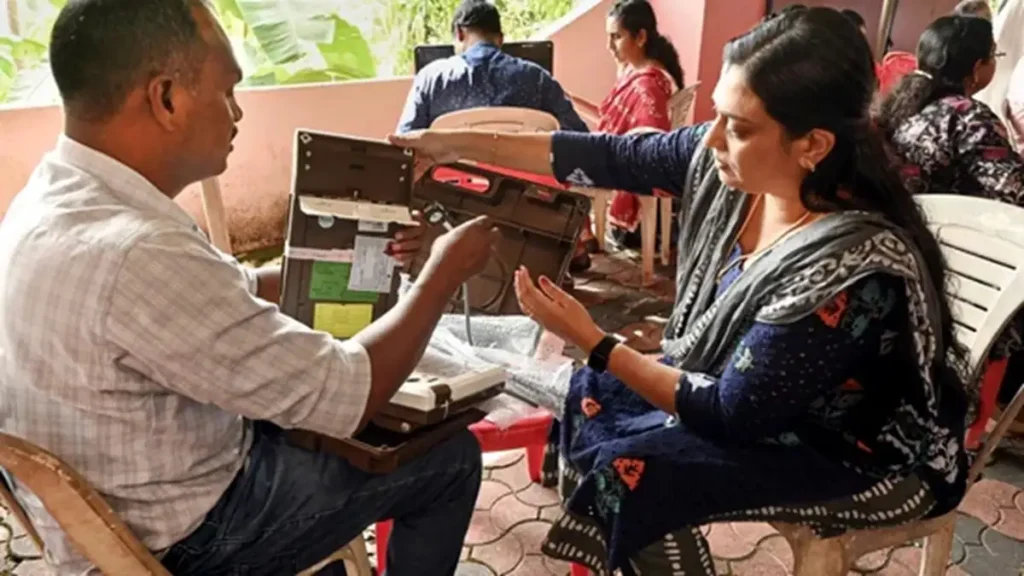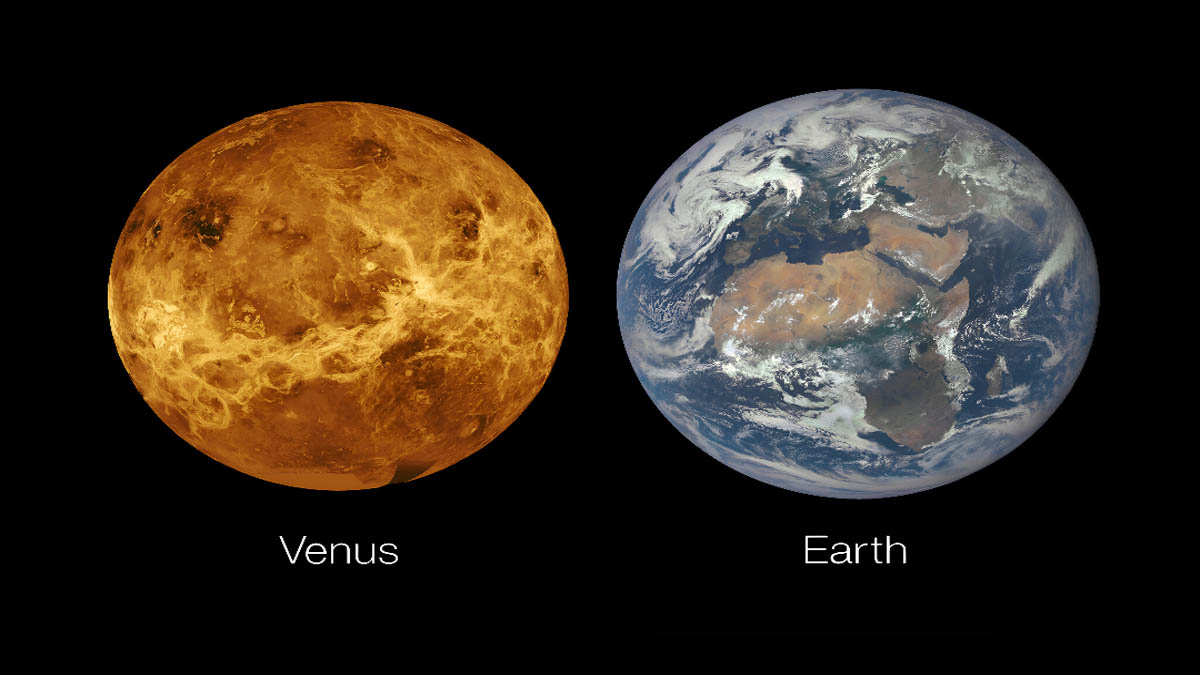Now Reading: Aditya-L1 Captures Rare Solar Plasma Ejection in UV Light
-
01
Aditya-L1 Captures Rare Solar Plasma Ejection in UV Light
Aditya-L1 Captures Rare Solar Plasma Ejection in UV Light

In a groundbreaking achievement, the Indian Space Research Organisation’s (ISRO) Aditya-L1 mission has captured an unprecedented view of a rare plasma ejection from the Sun in ultraviolet (UV) light. This first-of-its-kind observation, made by the Solar Ultraviolet Imaging Telescope (SUIT) onboard the Aditya-L1 spacecraft, provides scientists with a novel dataset to delve deeper into the enigmatic phenomena occurring in our star’s atmosphere.
The recorded event, which occurred on December 31, 2023, showcases a powerful solar flare emanating from the Sun. What makes this observation particularly significant is the clear capture of a “blob” of plasma being ejected from the flaring region. This ejection was tracked by SUIT as it rapidly accelerated across its field of view, transitioning from a speed of approximately 300 kilometers per second to a blistering 1500 kilometers per second – a velocity that would allow it to circle the entire Earth in a mere half-minute.
This marks the first time such a plasma ejection associated with a solar flare has been observed in the near-ultraviolet wavelength range (200-400 nanometers). Solar flares, characterized as sudden and intense bursts of energy caused by the release of magnetic energy in the Sun’s atmosphere, are typically studied in X-rays and extreme ultraviolet wavelengths. The SUIT instrument, with its 11 specialized filters, is uniquely designed to observe the Sun’s lower (photosphere) and middle (chromosphere) atmosphere in this near-UV range, a capability that has been missing in solar observations until now.
ISRO highlighted the significance of this observation, stating that it “offers scientists a new class of data sets to understand solar phenomena more deeply.” By capturing the dynamics of solar flares and associated ejections in this previously unexplored UV spectrum, researchers can gain critical insights into the mechanisms driving these powerful events and their impact on space weather. Understanding solar flares is paramount as they can unleash vast amounts of radiation and energetic particles that can potentially disrupt satellite communications, power grids, and pose risks to astronauts.
The Aditya-L1 mission, India’s first space-based solar observatory, was launched on September 2, 2023, and placed in a halo orbit around the first Sun-Earth Lagrange Point (L1) on January 6, 2024. This strategic location, about 1.5 million kilometers from Earth, provides an unobstructed and continuous view of the Sun. The SUIT instrument began regular science observations in October 2024, and this remarkable capture from December 2023 occurred during the initial cruise phase of the spacecraft, prior to its arrival at L1.
The observed solar flare was also associated with a high-velocity Coronal Mass Ejection (CME), clocked at an impressive speed of around 2852 kilometers per second. Interestingly, radio observations from the Radio Solar Telescope Network (RSTN) and Stereo-A waves detected multiple type III bursts during the acceleration of the plasma blob. These bursts are indicative of electrons being accelerated along open magnetic field lines, suggesting the involvement of magnetic reconnection – a fundamental process in solar eruptions.
Scientists have determined that the plasma blob observed by SUIT is likely composed of cold prominence material suspended within the erupting loop structure of the flare, which is then accelerated during the ejection process. The ability of SUIT to observe these events in the near-ultraviolet range provides a crucial link between the origin of these ejections on the Sun’s surface and their subsequent journey through the solar atmosphere.
This groundbreaking observation underscores the observatory-class capabilities of the Aditya-L1 mission and highlights the importance of multi-instrument and collaborative observations with ground-based and space-based telescopes worldwide in unraveling the complexities of our Sun. The data acquired by SUIT promises to be invaluable in advancing our understanding of solar phenomena and ultimately improving our ability to predict and mitigate the effects of space weather events on Earth.










